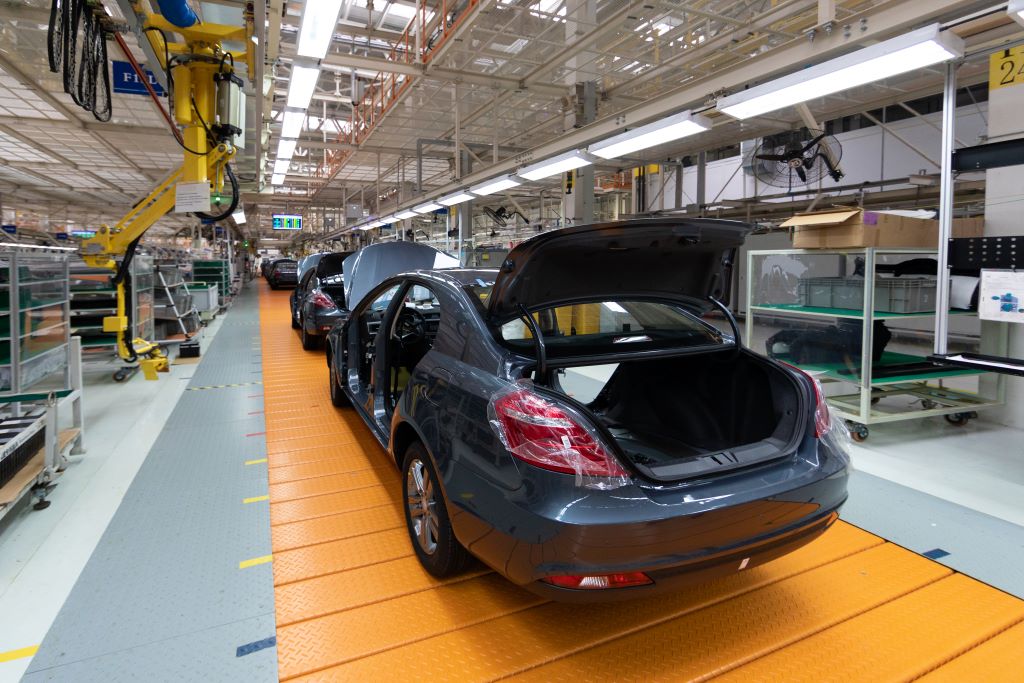In the realm of automotive engineering, where performance and efficiency are paramount, the role of electricians is often overlooked but crucial. While the mechanical aspects of vehicles receive significant attention, it is the intricate wiring and electrical systems that power modern automobiles.
In this article, we delve into the vital role that electricians play in automotive engineering, from designing and installing electrical systems to troubleshooting and optimizing performance.
The Foundation of Automotive Electrical Systems
Automotive electrical systems serve as the backbone of modern vehicles, providing the necessary power and control for a wide range of functions. Understanding the foundation of these systems is crucial for comprehending their intricate workings and importance in vehicle operation.
1. Wiring Harnesses
At the core of automotive electrical systems are wiring harnesses, which serve as conduits for electrical energy throughout the vehicle. These harnesses consist of bundles of wires that connect various components, distributing power and facilitating communication between different parts of the vehicle.
Functionality: Wiring harnesses serve as the nervous system of the vehicle, transmitting electrical signals to power essential components such as lights, sensors, and control units.
Organization: Harnesses help organize and streamline the complex network of wires in the vehicle, reducing clutter and minimizing the risk of electrical interference or damage. When it comes to ensuring the smooth operation of these electrical systems, it’s crucial to enlist the expertise of a skilled Electrician in Encino.
Durability: Designed to withstand the harsh operating conditions of the automotive environment, wiring harnesses are insulated and routed to withstand temperature extremes, vibration, moisture, and abrasion.
2. Electrical Components
Automotive electrical systems rely on a variety of components to generate, store, and regulate electrical energy. These components include batteries, alternators, starters, relays, fuses, and connectors, each playing a unique role in powering and controlling different aspects of the vehicle.
Batteries: Serve as the primary source of electrical energy, providing power to start the engine and operate electrical systems when the vehicle is not running.
Alternators: Generate electricity to recharge the battery and power electrical systems while the engine is running.
Starters: Initiate the engine’s combustion process by cranking the engine, allowing it to start and run independently.

3. Control Units
Electronic control units (ECUs) or control modules are microprocessor-based devices that govern specific functions of the vehicle. These units receive input from sensors, process data, and send commands to actuators to control various systems, such as engine management, transmission control, and safety systems.
Engine Management: Regulate fuel injection, ignition timing, and other parameters to optimize engine performance, fuel efficiency, and emissions.
Transmission Control: Manage gear shifting and transmission operation for optimal performance and smoothness.
Safety Systems: Oversee functions such as anti-lock braking (ABS), traction control, stability control, and airbag deployment to enhance vehicle safety.
4. Sensors
Sensors play a critical role in monitoring various parameters of the vehicle and providing data to the control units for decision-making. These devices detect changes in temperature, pressure, speed, position, and other variables, enabling the vehicle’s systems to adjust and respond accordingly.
Temperature Sensors: Monitor engine coolant temperature, intake air temperature, and exhaust gas temperature to prevent overheating and optimize engine performance.
Pressure Sensors: Measure oil pressure, fuel pressure, and tire pressure to ensure proper lubrication, fuel delivery, and tire inflation
Speed Sensors: Detect wheel speed, vehicle speed, and engine speed to facilitate functions such as traction control, cruise control, and transmission shifting.
Position Sensors: Determine the position of various components, such as throttle position, crankshaft position, and camshaft position, to ensure precise engine operation and timing.
The Role of Electricians in Automotive Engineering
Electricians play a multifaceted role in the design, installation, maintenance, and optimization of automotive electrical systems. Their expertise is essential in ensuring the safety, reliability, and performance of modern vehicles.
Design and Installation
Electricians play a central role in ensuring that these systems meet performance, safety, and regulatory standards while seamlessly integrating with other vehicle components.
System Design: Electricians collaborate with automotive engineers to design electrical systems that meet performance, safety, and regulatory requirements.
Wiring Installation: They install wiring harnesses, connectors, and electrical components, ensuring proper routing, termination, and connection.
Integration: Electricians integrate electrical systems with other vehicle components, such as engines, transmissions, chassis, and body control modules.

Troubleshooting and Repair
Troubleshooting and repair are integral aspects of maintaining and ensuring the proper functioning of electrical systems in vehicles.
Diagnostic Testing: Electricians use specialized tools and diagnostic equipment to identify and troubleshoot electrical faults and malfunctions.
Repair and Replacement: They repair or replace faulty wiring, connectors, and components to restore functionality and performance.
Software Updates: Electricians perform software updates and reprogramming of control units to address software-related issues and improve performance.
Performance Optimization
Performance optimization is a continuous process aimed at enhancing the efficiency, reliability, and overall performance of electrical systems in vehicles.
Power Management: They optimize power distribution and consumption to maximize efficiency and performance while minimizing energy losses.
Voltage Regulation: Electricians ensure stable voltage levels throughout the vehicle’s electrical system, preventing voltage spikes or drops that could damage sensitive electronic components.
Performance Tuning: They collaborate with automotive engineers and performance enthusiasts to customize electrical systems for enhanced performance, such as upgrading lighting, audio, or aftermarket accessories.
Innovations in Automotive Electrical Systems
These innovations aim to enhance safety, efficiency, and convenience while paving the way for the development of next-generation vehicles. Below are some notable innovations shaping the future of automotive electrical systems:
1. Electric Vehicle (EV) Integration
The widespread adoption of electric vehicles has led to significant innovations in automotive electrical systems. Advanced battery management systems, high-voltage wiring, and regenerative braking technology optimize energy efficiency and extend driving range.
2. Autonomous Driving Systems
Autonomous driving technologies rely heavily on sophisticated electrical systems, including sensors, cameras, radar, and LiDAR (Light Detection and Ranging) systems. These systems enable vehicles to perceive and interpret their surroundings, navigate autonomously, and make real-time driving decisions.
3. Connected Vehicle Technology
Connected vehicle technology integrates wireless communication systems, such as 5G connectivity and vehicle-to-everything (V2X) communication, to enable seamless communication between vehicles, infrastructure, and other connected devices. This facilitates features like remote diagnostics, over-the-air updates, and advanced driver assistance systems (ADAS).
4. Infotainment and User Interfaces
Modern vehicles feature advanced infotainment systems with intuitive user interfaces, touchscreen displays, and voice recognition capabilities. These systems provide drivers and passengers with access to entertainment, navigation, communication, and vehicle control features, enhancing the overall driving experience.
5. Electric Powertrains and Motors
Electric powertrains and motors are increasingly replacing traditional internal combustion engines, leading to innovations in electrical propulsion systems. High-efficiency electric motors, power electronics, and motor controllers optimize performance, torque delivery, and energy efficiency in electric vehicles.

Conclusion
Electricians are the unsung heroes of automotive engineering, playing a crucial role in powering and optimizing the performance of modern vehicles. From designing and installing electrical systems to troubleshooting and repairing faults, their expertise ensures the safety, reliability, and efficiency of automotive electrical systems.
As automotive technology continues to advance, the role of electricians will become increasingly important in shaping the future of transportation, driving innovation and pushing the boundaries of performance and sustainability.






